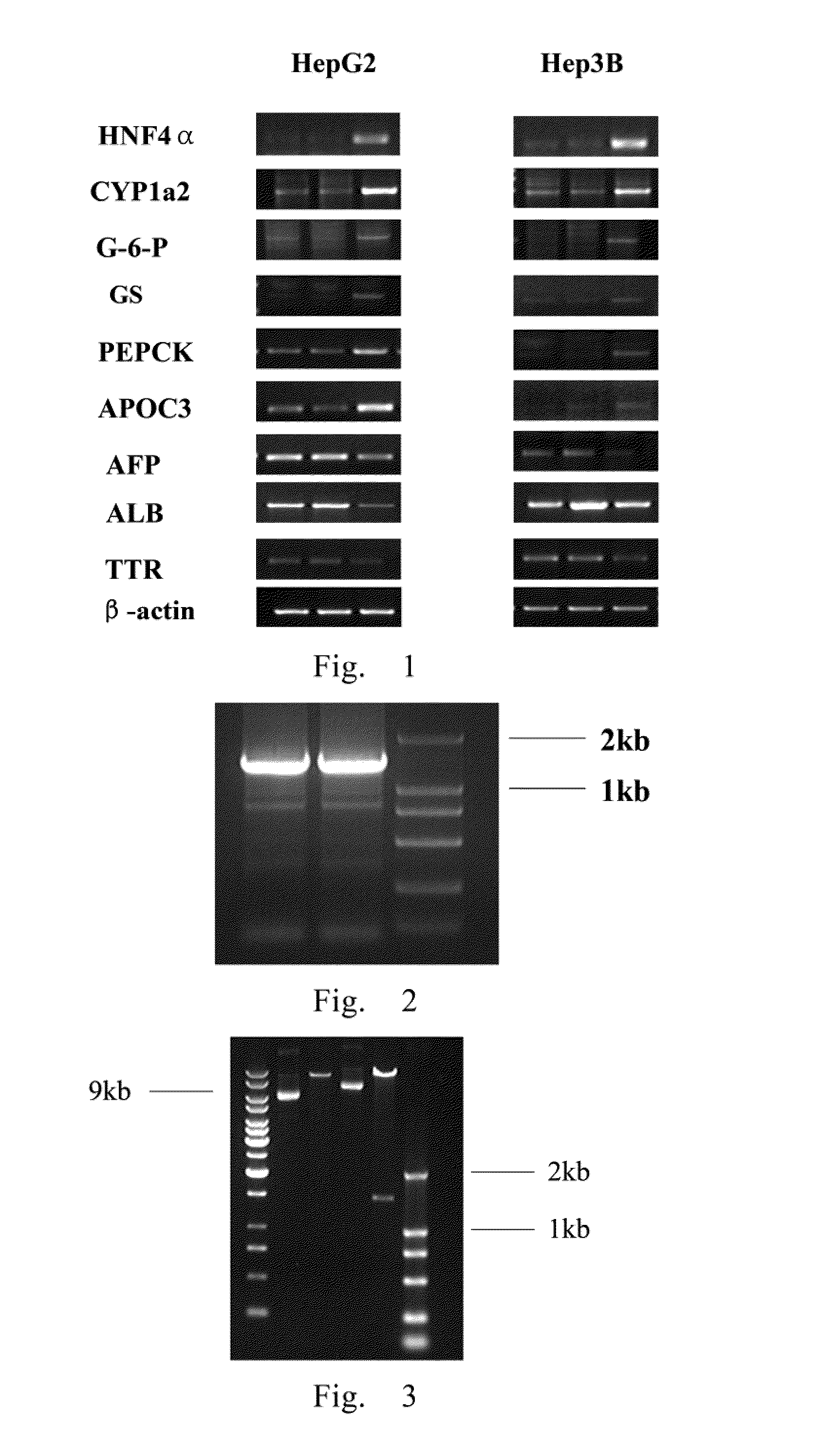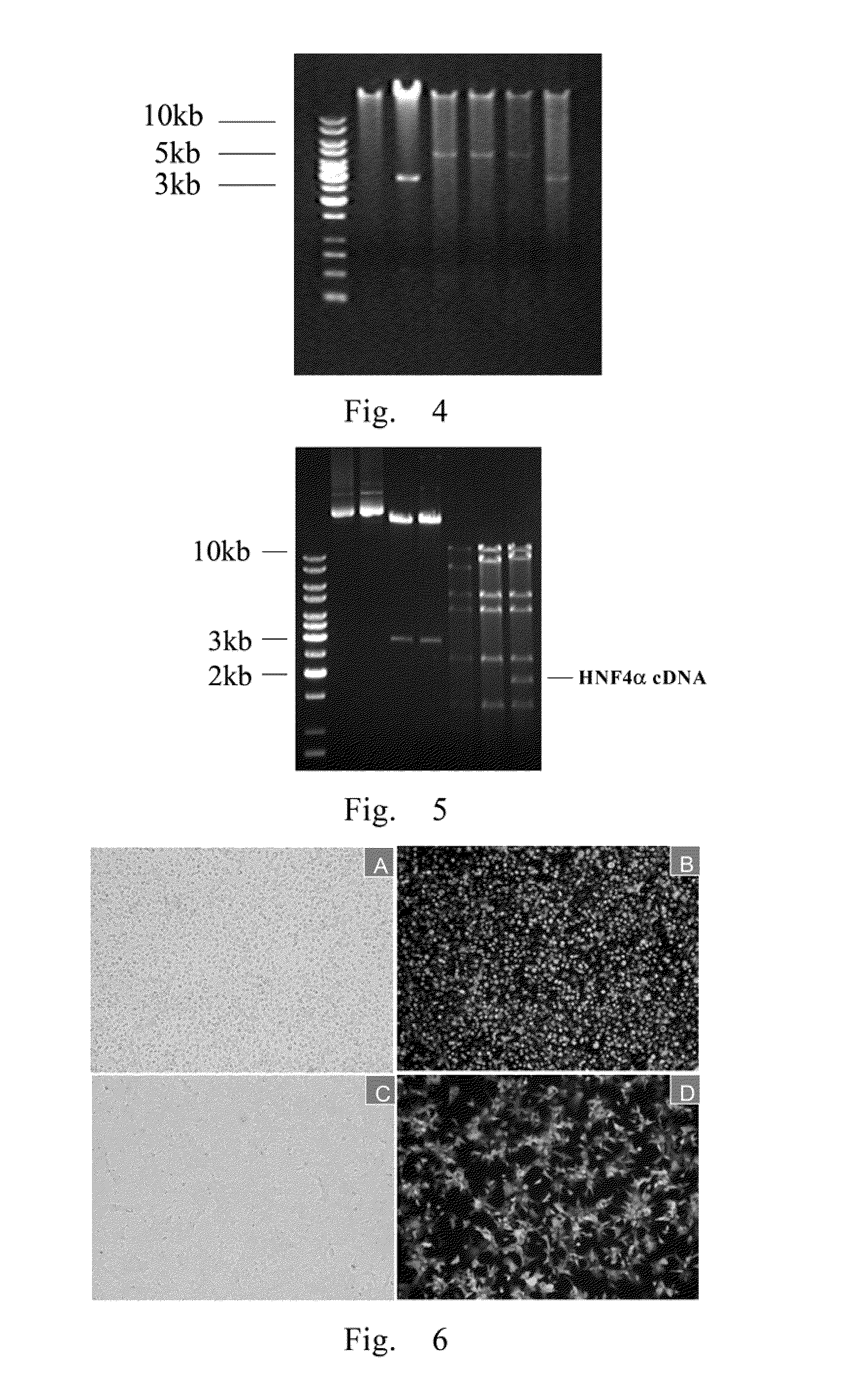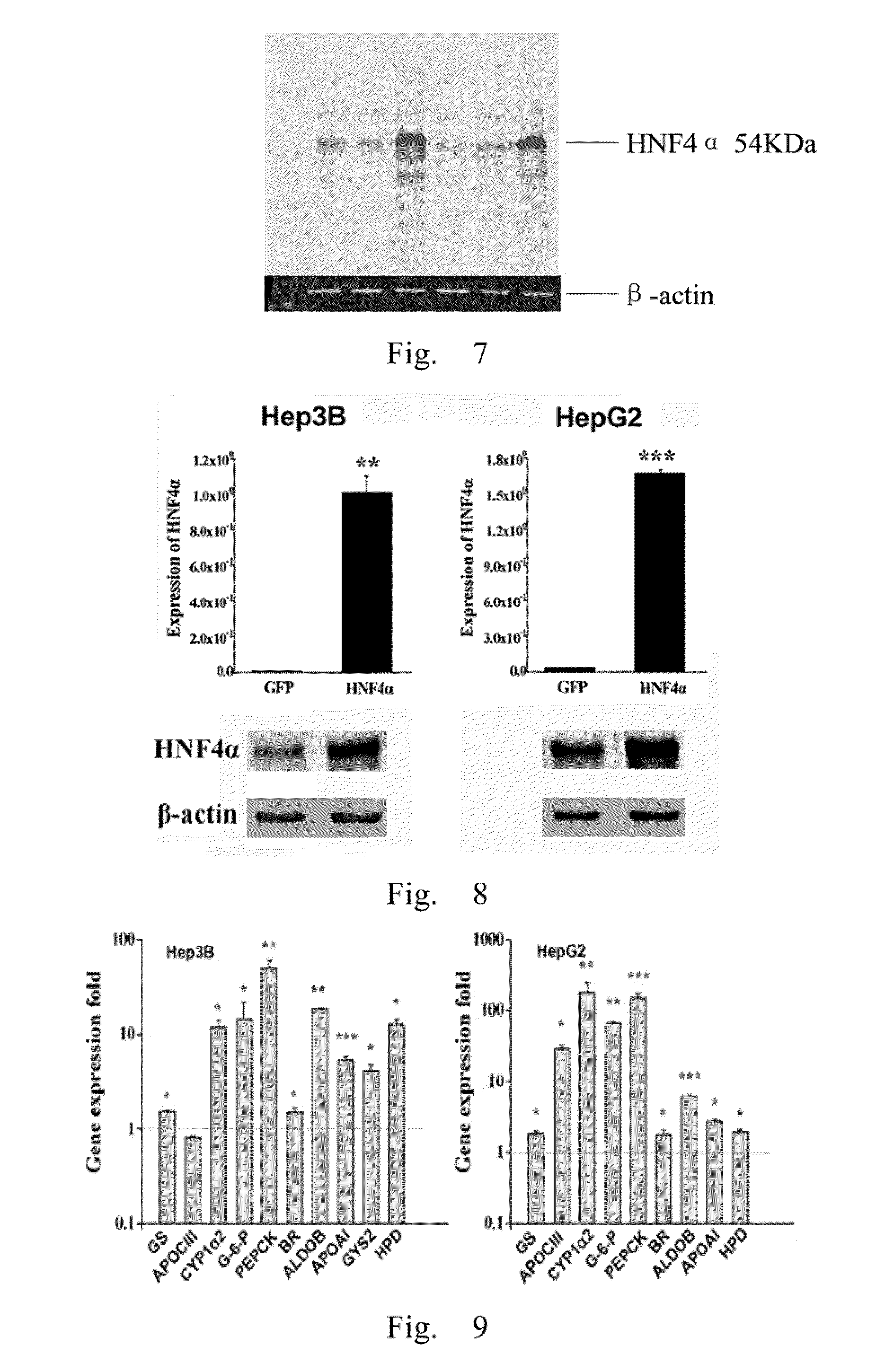Use of hnf4alpha for treatment of human malignant solid tumors through induction-differentiation therapy
a technology of induction differentiation and human malignant solid tumors, which is applied in the field of molecular biology, cell biology and medicine, can solve the problems of difficult selection of appropriate drugs or related substances to carry out specific targeting regulation, limited effect, and difficult to differentiate the treatment of malignant solid tumors, and achieve the effect of suppressing in vivo formation
- Summary
- Abstract
- Description
- Claims
- Application Information
AI Technical Summary
Benefits of technology
Problems solved by technology
Method used
Image
Examples
example 1
RT-PCR Detection on the Expression of HNF4α Gene and the Related Function Genes of the Hepatocytes in the Human Liver Tumor Cell Lines
[0078]1. The commercially available and conventional liver tumor cell lines Huh-7, Hep3B, HepG2 were inoculated onto the six-well plate with the concentration of 8×105 cells / dish, and were cultured in the fresh medium containing 10% fetal bovine serum. On the next day, the RNA of the cells was extracted, and the OD260 value was determined by spectrophotometer, with the working concentrations of 1 μg / μl and 0.1 μg / μl. The integrity of RNA was tested by 1% agarose gel electrophoresis.
[0079]2. RT-PCR: 4 μg of RNA, 2 μl of random primer, DEPC were taken, and water was added to total volume of 33 μl. The solution was set at 70° C. for 5 min, 0° C. for 5 min. Then, 10 μl of 5× Buffer, 3 μl of dNTP, 2 μl of RNA reverse transcriptase and 2 μl of RNA enzyme inhibitor were added and mixed, and were set at 37° C. for 1.5 h. The reverse transcription products wer...
example 2
Preparation of Replication-Defective Recombinant Adenovirus for HNF4α Expression
[0080]1. Obtaining HNF4α 1425 bp cDNA fragment: The primers were designed and synthesized according to HNF4α cDNA sequences. Sense primer (Bgl II restriction enzyme cutting site was added at 5′ end): 5′-CCG AGA TCT AGA ATG CGA CTC TCC AAA ACC-3′ (SEQ ID NO: 21); antisense primer (EcoRV restriction enzyme cutting site was added at 5′ end): 5′-CGC GAT ATC GGC TTG CTA GAT AAC TTC CTG CT-3′(SEQ ID NO: 22).
[0081]HNF4α cDNA fragment was amplified by PCR, and the product was isolated using 1% agarose gel electrophoresis. The fragment size was identified and the gel block was cut and transferred into Eppendorf tube. The gel was weighed. 200 ml NT solution / 100 mg gel was added into the Eppendorf tube, the tube was heated at 50° C. for 5-10 mins until the gel melt. The liquid was flown through columns, centrifugated 1 min at 13,000 rpm, and 600 μl NT3 buffer solution was added, centrifugated 2 mins at 13,000 rpm. ...
example 3
Using RT-PCR and Western Blot to Test the Expression of HNF4α in Human Liver Tumor Cell Line Infected by the AdHNF4α
[0084]1. Human hepatoma cell lines HepG2 and Hep3B were inoculated onto the six-well plate with a concentration of 5×105 cells / dish. The cells were infected by the virus AdHNF4α with MOI 40 and 100, respectively. After 24 hours, the medium were replaced by fresh DMEM culture solution containing 10% FBS, and the expression of GFP was observed after 3 days (FIG. 6). The total RNA was extracted with Trizol kit, and the reverse transcription reaction was conducted for 2 hours. 1 μl diluted reverse transcription product was used as template to carry out the amplification reaction of HNF4α PCR and the reaction conditions were the same as above. At the same time, the PCR reaction of the β-actin was carried out in the same reaction conditions an used as the internal control. The reaction system was as follows.
ComponentsVolume (μl)Sense primer0.3μlAntisense primer0.3μlReverse t...
PUM
| Property | Measurement | Unit |
|---|---|---|
| Volume | aaaaa | aaaaa |
| Volume | aaaaa | aaaaa |
| Volume | aaaaa | aaaaa |
Abstract
Description
Claims
Application Information
 Login to View More
Login to View More - R&D
- Intellectual Property
- Life Sciences
- Materials
- Tech Scout
- Unparalleled Data Quality
- Higher Quality Content
- 60% Fewer Hallucinations
Browse by: Latest US Patents, China's latest patents, Technical Efficacy Thesaurus, Application Domain, Technology Topic, Popular Technical Reports.
© 2025 PatSnap. All rights reserved.Legal|Privacy policy|Modern Slavery Act Transparency Statement|Sitemap|About US| Contact US: help@patsnap.com



